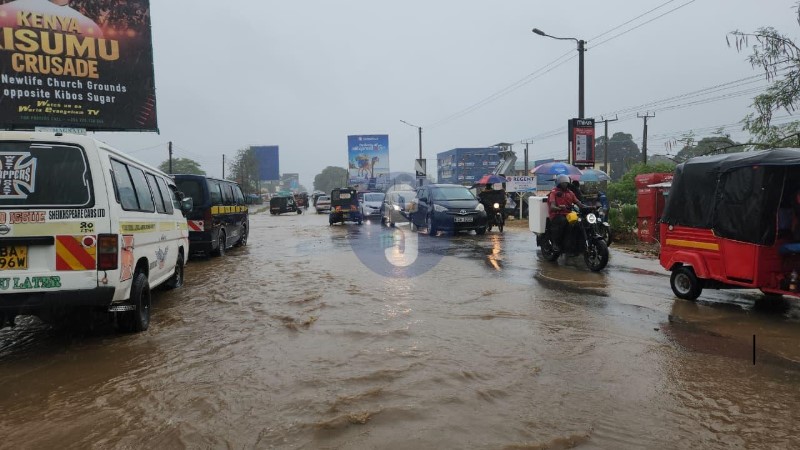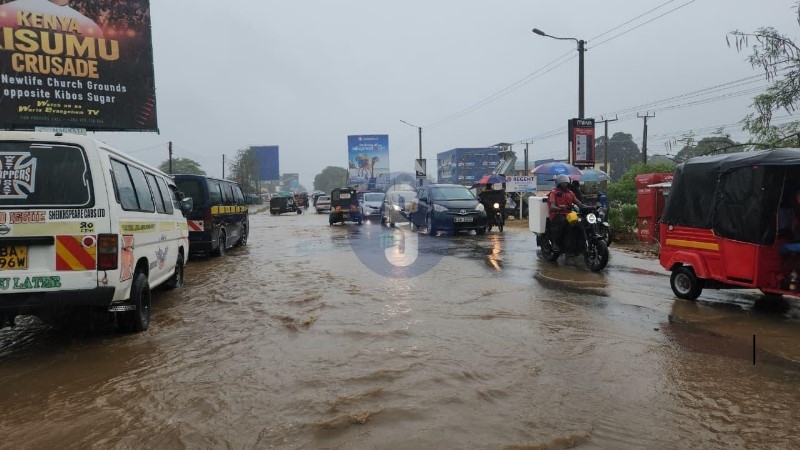
 Flooded roads following recent rains in Ukunda.
Flooded roads following recent rains in Ukunda.
Despite the expected general dryness, localised major storms may still occur. The forecast warns of possible heavy rains in parts of western Kenya, including the Lake Victoria Basin, the Highlands west of the Rift Valley and the South Rift Valley.
Downpours could trigger flash floods in vulnerable areas.
The latest three-month forecast predicted generally reduced rainfall and warmer-than-usual temperatures over the next three months, with the short rain peaking in November. Conditions then will become hotter and drier as January approaches.
The forecast was outlined in the November 2025 to January 2026 outlook by the Kenya Meteorological Department.
The November-January 2026 outlook showed that most parts of the country are expected to receive rainfall in November and into part of December, before conditions turn mostly hot and dry in January.
Acting Met director Edward Muriuki said November typically marks the peak of the October-November-December short rains.
“However, rainfall this season is projected to be below the long-term average across many regions, except in parts of western Kenya where near-normal conditions are expected,” he said. “Temperatures are also likely to be warmer than usual across the country.”
Near-average to above-average rainfall is likely this month in the Lake Victoria Basin, the Highlands west of the Rift Valley, the Central and South Rift Valley and parts of northwestern Kenya.
In contrast, the Highlands east of Rift Valley, including Nairobi, as well as the southeastern lowlands and some areas in the northeast, are expected to receive near to below-average rainfall. The coastal region is likely to receive below-average rainfall, with generally poor distribution and intermittent dry spells.
Temperatures are expected to be higher than usual in most regions, with the strongest warming likely over central and eastern Kenya. Some parts of western Kenya may experience near normal to slightly cooler temperatures.
Muriuki said the forecast is influenced by global climate patterns, particularly La Niña and a negative Indian Ocean Dipole, both associated with reduced rainfall in East Africa.
The IOD is an irregular oscillation of sea surface temperatures; the western Indian Ocean becomes alternately warmer in the positive phase, then colder in the negative phase, compared with the eastern part.
“Current projections indicate La Niña conditions are likely to
persist through December 2025 to February 2026, with a transition to neutral conditions expected between
January and March
2026,” he
said.
“The negative IOD remains active, and together these drivers are contributing to the likelihood of below-average rainfall,” the Met chief said.


















